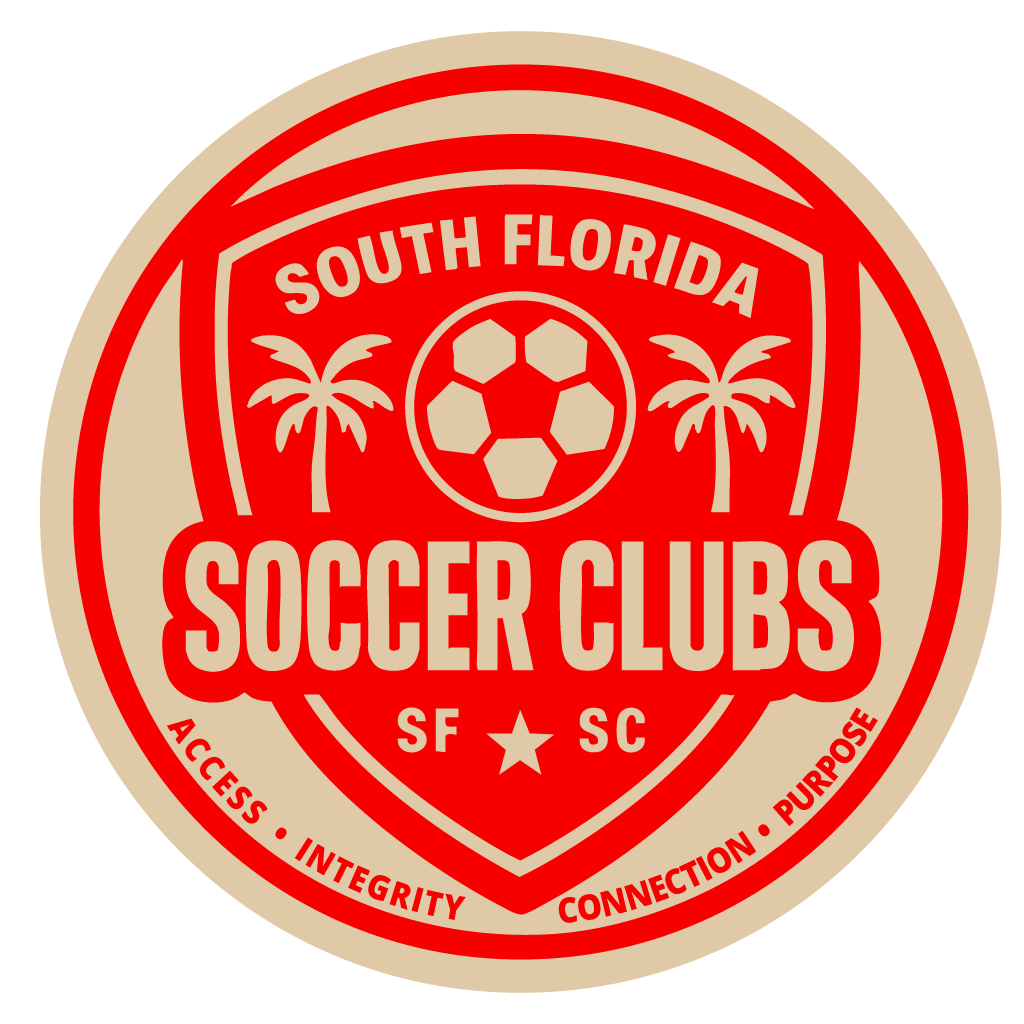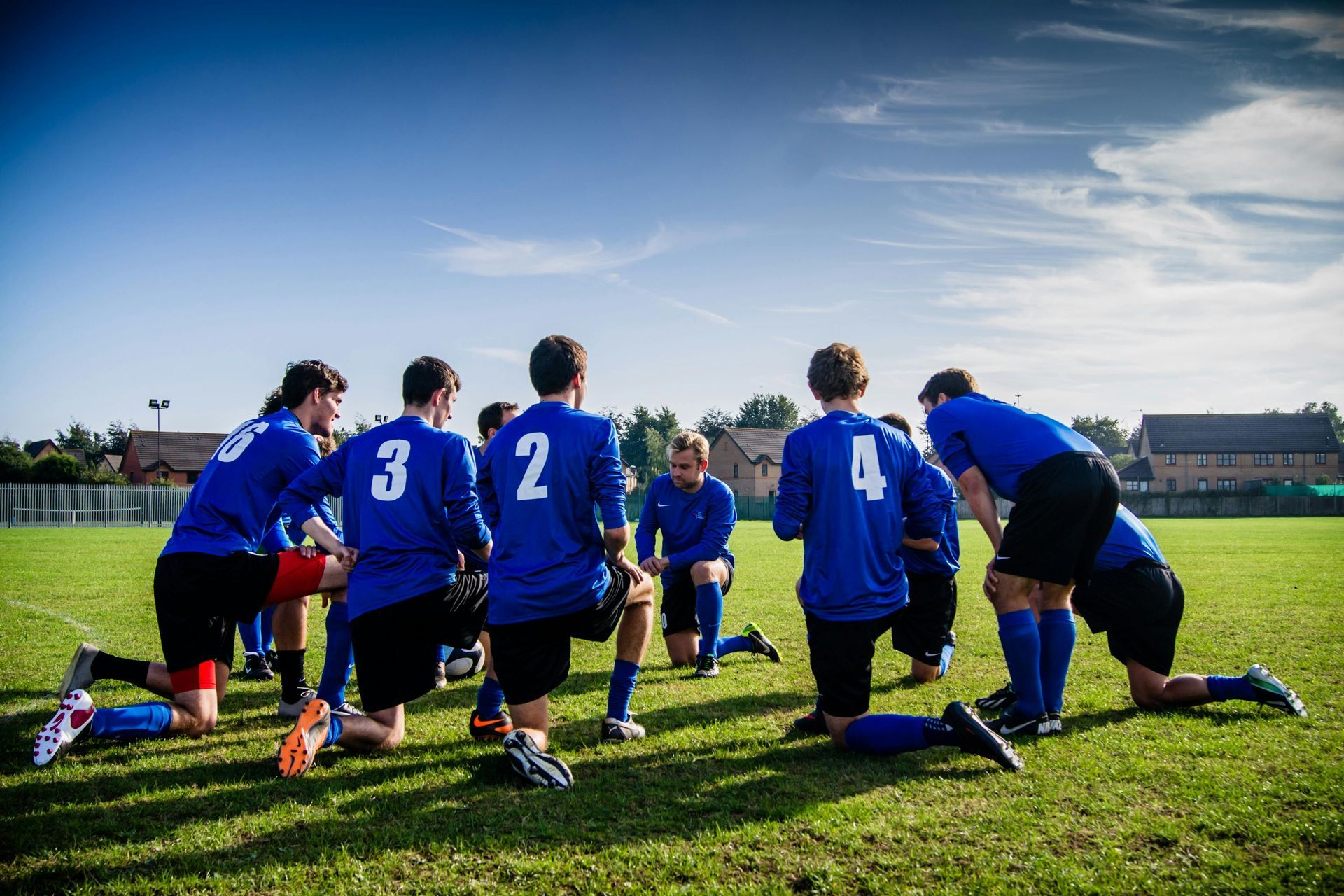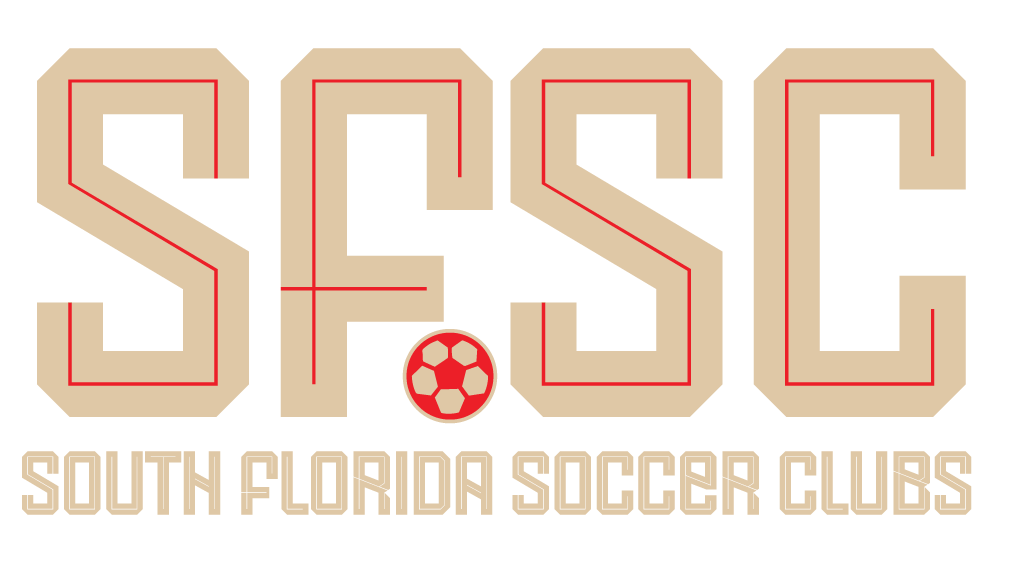Prepping-your-kids-for-high school-college-soccer & beyond!
Selecting a high school for soccer
in South Florida
When selecting a high school for soccer in South Florida, parents and their children should take a comprehensive approach, considering several key factors to ensure the school aligns with their athletic and academic goals. Here’s how to approach the selection process:
How to Help Your Child Get Scouted for Universities
While Playing Club and High School Soccer
The main differences between D1, D2, and D3 college soccer in the United States lie in the level of competition, scholarships, and overall athletic commitment. Here’s a breakdown:
1. NCAA Division 1 (D1) Soccer
• Highest level of competition: D1 soccer programs are the most competitive, attracting top-tier talent from the U.S. and internationally.
• Athletic scholarships: Schools can offer full and partial athletic scholarships, but each team has a limit on the number of scholarships available.
• Time commitment: Players experience rigorous training schedules, year-round conditioning, and frequent travel. Student-athletes in D1 must balance academics with intense athletic demands.
• Roster depth: D1 teams typically have larger rosters and recruit high-level players, making it harder to secure playing time.
2. NCAA Division 2 (D2) Soccer
• Competitive, but less intense than D1: While still highly skilled, D2 programs usually have slightly less athleticism and speed compared to D1.
• Scholarships available, but fewer: D2 schools offer athletic scholarships, but typically fewer than D1, meaning players often receive partial scholarships rather than full rides.
• More balanced schedule: The time commitment is still significant, but there’s slightly more flexibility for academics and social life compared to D1.
3. NCAA Division 3 (D3) Soccer
• Still competitive, but less emphasis on athletics: D3 soccer offers high-level competition but doesn’t have the same level of intensity as D1 or D2.
• No athletic scholarships: D3 schools do not offer athletic scholarships, but student-athletes can receive academic and merit-based financial aid.
• Greater academic focus: Since there are fewer athletic commitments, players have more time to focus on schoolwork and extracurricular activities.
• Shorter season & less travel: The season is shorter than D1 and D2, with fewer mandatory training sessions during the offseason.
Which One is Best?
It depends on the athlete’s goals:
• D1: Best for those who want to compete at the highest level and possibly go pro.
• D2: Great balance between athletics and academics, with scholarship opportunities.
• D3: Ideal for student-athletes who want to play competitively but prioritize academics and a well-rounded college experience.
In NCAA Division I soccer, redshirting follows similar principles as in other sports. Here’s how it works specifically for soccer:
A redshirt season allows a player to sit out from official competition for a year while preserving one of their four seasons of eligibility.
• The athlete can still practice and train with the team but cannot play in official matches.
Reasons for Redshirting in Soccer
1. Player Development:
• Freshmen may need time to physically adapt to the demands of college-level soccer.
• Players use this time to improve technical skills, tactical awareness, and fitness.
2. Team Depth:
• A coach might redshirt a player if the team already has a deep roster, ensuring the player will have more opportunities in future seasons.
3. Injury (Medical Redshirt):
• If a player sustains a significant injury and has played in fewer than 30% of the season’s matches (and none after the midpoint of the season), they can apply for a medical redshirt to retain that year of eligibility.
4. Academic Adjustment:
• A redshirt season can help players focus on academics and adjust to college life without the added pressure of game-day travel and competition.
Key NCAA Soccer Rules for Redshirting
1. Playing Time Limits:
• Once a player participates in an official match (even as a substitute), they are no longer eligible to redshirt for that season.
• Coaches must plan redshirting decisions carefully to avoid accidental eligibility loss.
2. Medical Hardship Waiver:
• If a player is injured during the season and meets the NCAA criteria (played in less than 30% of the matches), they can apply to preserve their eligibility.
3. Five-Year Clock:
• Like other NCAA sports, Division I soccer players have five academic years to use their four seasons of eligibility.
Benefits of Redshirting in Soccer
• Physical Maturity: Soccer at the D1 level is fast-paced and physically demanding. Redshirting allows younger players to bulk up and avoid injury risks.
• Tactical Understanding: Players can use the year to learn the coach’s system and adapt to college-level tactics.
• Depth Planning: Helps teams manage their roster and maintain a competitive edge for future seasons.
Real-Life Example
• A freshman forward joins a team with experienced attackers. The coach decides to redshirt them for a year so they can:
• Train and travel with the team.
• Avoid burning a year of eligibility while gaining valuable development time.
• Start their playing career the following season with more confidence and experience.
Understand the Recruitment Process
NCAA Divisions: Familiarize yourself with the differences between NCAA Division I, II, and III, NAIA, and NJCAA programs. Each level has different requirements, levels of competition, and scholarship opportunities
Eligibility Requirements: Ensure your child meets the academic and athletic eligibility criteria for the NCAA or NAIA, including maintaining a good GPA and registering with the NCAA Eligibility Center.
Create a Soccer Resume and Highlight Reel
Soccer Resume: Include your child’s athletic achievements, stats, club and high school teams, tournaments, GPA, and academic honors.
• Highlight Reel: Compile a 3-5 minute video showing your child’s best plays, emphasizing technical skills, tactical awareness, and work ethic. Include:
• Goals and assists for attacking players.
• Defensive highlights for defenders.
• Saves and distribution for goalkeepers.
• Clips from both club and high school games.
• Contact Information: Add your child’s name, graduation year, position, and contact details at the beginning and end of the video.
Build an Online Presence
Recruiting Platforms:
Use platforms like Hudl, FieldLevel, or NCSA to upload your child’s resume and highlight reel. These platforms connect athletes with college coaches.
• Social Media: Create a professional social media profile (e.g., Instagram or Twitter) focused on soccer. Post game highlights, training videos, and tournament updates to attract college scouts.
Attend College Showcases and ID Camps
College Showcases: Club teams often participate in showcase tournaments where college scouts are present. Ensure your child’s club team registers for prominent events like the Disney Soccer Showcase or IMG Cup in Florida.
• College ID Camps: Sign your child up for ID camps hosted by colleges they are interested in. This provides direct exposure to coaches and an opportunity to demonstrate skills in person.
Communicate with College Coaches
Research Colleges: Help your child identify schools that fit their academic and athletic goals. Create a list of colleges to target.
• Email Coaches: Teach your child how to write personalized emails to college coaches. Include:
• A brief introduction (name, position, graduation year).
• Why they are interested in the program.
• A link to their highlight reel and recruiting profile.
• Upcoming schedules for games and showcases.
• Follow Up: Encourage your child to follow up with coaches after showcases or camps to express continued interest.
Leverage Club and High School Coaches
Advocacy: Ask club and high school coaches to reach out to college programs on your child’s behalf. Their connections can open doors to recruitment opportunities.
• References: College coaches value recommendations from trusted sources, so ensure your child maintains a good relationship with their coaches.
Play at the Right Level
Competitive Club
Teams: Playing for a strong club team in high-profile leagues (e.g., MLS Next, ECNL, or USYS National League) increases visibility.
High School Soccer: While club soccer typically offers more exposure, excelling in high school soccer can also draw attention, especially if the team has a history of producing collegiate players.
Focus on Academics
Strong GPA: Academic performance is just as important as athletic ability. Colleges often recruit players who can balance sports with academics.
Test Scores: Aim for competitive SAT or ACT scores, particularly for schools with rigorous academic standards.
Attend Tournaments and Games Strategically
Tournament Play: Ensure your child participates in tournaments that attract college scouts. These events are opportunities for exposure to multiple schools at once.
Play with Confidence: Teach your child to stand out by showcasing leadership, teamwork, and composure during games.
Maintain Fitness and Skill Development
Training: Encourage consistent training outside of games to improve technical and physical abilities.
Mental Toughness: Help your child develop resilience and a positive attitude to handle challenges and setbacks during recruitment.
Be Supportive but Not Overbearing
Encourage Ownership: Let your child take the lead in the recruitment process. Coaches appreciate players who are proactive and motivated.
Provide Resources: Support your child with the tools they need, such as access to training, camps, and recruitment platforms.
Emphasize Balance: Remind your child to enjoy the game and not let the recruitment process become overwhelming.
Stay Organized
Track Communication: Keep a spreadsheet of colleges, contact information, and correspondence with coaches.
Deadlines: Be aware of recruitment deadlines and timelines for scholarships, official visits, and applications.
By following these steps, parents can play an active role in helping their child get noticed by college scouts while fostering independence and responsibility in the recruitment process.
What to Do If a College Coach Contacts You About Playing Soccer
If a college coach contacts you—whether through email, a phone call, or a request for a Zoom meeting—it’s an exciting step in the recruiting process. However, it’s important to understand what this outreach means and what steps to take next.
01
Why Is a College Coach Contacting You?
A coach reaching out typically means they have seen you play in high school, club, showcases, or tournaments and are interested in learning more about you. However, the level of interest and what they may be offering depends on a few factors:
1. They Are Interested in Recruiting You
• If a coach personally contacts you, it usually means you are on their radar as a potential recruit for their program.
• They may want to discuss your soccer ability, academic qualifications, and overall fit for their team.
2. They May Be Considering You for a Scholarship
• NCAA Division 1 & 2 programs can offer athletic scholarships, but these are limited.
• D1 men’s soccer teams have a maximum of 9.9 scholarships to divide among all players.
• D2 teams have a maximum of 9 scholarships.
• NCAA Division 3 schools do not offer athletic scholarships but can provide academic scholarships or financial aid.
• NAIA and NJCAA (junior colleges) also offer scholarships, sometimes with more flexibility.
3. They Might Be Offering a Roster Spot Without a Scholarship
• Not all college soccer players receive athletic scholarships. Some are recruited as walk-ons (players who join the team but do not receive a scholarship).
• If a coach is interested but does not mention a scholarship, they may be offering a roster spot rather than financial aid.
4. They Want to See You Play More Before Making an Offer
• Coaches may be reaching out to gauge your interest and build a relationship before deciding on an offer.
• They may request more game film or invite you to a camp or ID showcase for further evaluation.
02
How to Respond When a College Coach Contacts You
If a coach reaches out, it’s important to handle the situation professionally and take advantage of the opportunity.
Respond Promptly and Professionally
• If a coach emails or calls, reply within 24-48 hours to show you are serious.
• Keep your response short, polite, and enthusiastic. Example:
Coach [Last Name],
Thank you for reaching out! I’m very excited to hear from you and would love to learn more about your program. Please let me know a time that works for a call or Zoom meeting. I look forward to speaking with you.
Best,
[Your Name]
Prepare for the Call or Meeting
If a coach schedules a call or Zoom meeting, be ready with:
• Questions about the soccer program, training schedule, and team culture.
• Information about your academics (GPA, test scores, intended major).
• A list of your upcoming tournaments or showcases where they can watch you play.
Ask About Your Standing in Their Recruiting Process
It’s okay to ask where you stand in the coach’s evaluation. Some polite ways to phrase this:
• “Coach, I really appreciate your interest. Can you share more about where I stand in your recruiting process?”
• “Are you considering me for a scholarship, a roster spot, or would I need to try out?”
Follow Up and Stay in Touch
If a coach is interested but hasn’t made an offer yet:
• Send updates on your latest game performances, highlight videos, and achievements.
• Keep communication open and express your continued interest in the program.
03
How to Tell If a Coach Is Offering a Scholarship or Just a Spot
• If a coach says: “We are offering you a scholarship”, it’s clear.
• If they ask: “Would you be interested in playing for us?” without mentioning money, they may be offering a walk-on spot.
• If they say: “We want to see you play more”, they are still evaluating you.
04
Final Tips for the Recruiting Process
Keep Your Options Open – Don’t commit too early; talk to multiple schools.
Attend Showcases & ID Camps – This increases your exposure.
Maintain Strong Academics – Many schools offer academic scholarships, which can be combined with athletic aid.
Be Realistic About Your Level – D1 programs are highly competitive. Consider D2, D3, NAIA, or junior colleges as well.
If a coach is reaching out, it’s a great sign that you are on their list. Stay professional, ask the right questions, and continue working hard on both soccer and academics.
So your child wants to become a
professional soccer player.
How to Help Your Teenager Pursue a Career as a Professional Soccer Player
If your child dreams of becoming a professional soccer player while playing club and high school soccer, it’s crucial to provide guidance and support while they take the necessary steps to reach their goal. Here’s a roadmap to help them navigate the journey to professional soccer:
1. Prioritize Development Over Competition
• Skill Development: Focus on improving technical skills (ball control, passing, shooting), physical fitness, and tactical understanding. A strong foundation is crucial.
• Position Specialization: Help your child understand their strengths and develop mastery in their chosen position.
• Individual Training: Complement team practices with personal training sessions to work on weaknesses and refine skills.
2. Choose the Right Leagues and Teams
• Elite Club Teams:
• MLS Next: The most competitive youth league in the U.S., directly tied to Major League Soccer (MLS) academies. Playing in this league offers significant exposure to professional scouts.
• Elite Clubs National League (ECNL): A top-tier league for competitive youth soccer that focuses on development and competition.
• US Youth Soccer National League: Offers high-level competition and opportunities for college and professional exposure.
• USL Academy League: Linked to the United Soccer League (USL), this league provides a direct pathway to professional teams in the USL system.
• High School Soccer: While high school soccer is valuable for local recognition and development, elite club teams generally offer more professional exposure.
3. Join a Professional Academy
• MLS Academies: Many MLS teams operate youth academies where talented players can train and compete in a professional environment. These academies are often free and provide a direct path to the MLS.
• European and South American Academies: If possible, explore opportunities abroad. Countries like Spain, Germany, and Brazil have world-renowned academies with professional pipelines.
• Scouting Opportunities: Attend tryouts or showcase events for academies affiliated with professional clubs.
4. Compete in High-Profile Tournaments
• National and International Tournaments: Events like the Dallas Cup, Surf Cup, and Generation adidas Cup attract professional scouts.
• Showcase Tournaments: Participate in showcases with significant scouting presence to increase visibility.
5. Build a Strong Online Presence
• Highlight Reel: Create a professional video showcasing your child’s skills in real-game scenarios. Include key moments such as goals, assists, defensive plays, and tactical decision-making.
• Social Media: Use platforms like Instagram, Twitter, or YouTube to share game highlights, training clips, and tournament updates. Scouts often look online to evaluate players.
•
Recruiting Platforms: Utilize websites like FieldLevel or Hudl to create a profile for recruiters and scouts to view.
6. Attend Professional Trials and Combines
• Open Tryouts: Some professional teams host open tryouts. Research opportunities with MLS, USL, or international clubs.
• Combines: Combines are events where players can showcase their talent to multiple scouts and coaches. These are often hosted by professional organizations or agencies.7. Network and Get Recommendations
7. Coaches: Ask club and high school coaches for referrals to professional scouts or teams. Coaches often have valuable connections in the soccer community.
• Agents: If your child shows significant potential, consider hiring a certified soccer agent who can help navigate professional opportunities.
8. Participate in International Camps
• Training Abroad: Attending soccer camps in countries with a strong soccer culture (e.g., Spain, England, Brazil) can offer unique exposure and experiences.
• National Team Pathways: Explore opportunities with youth national teams through U.S. Soccer or other countries (if eligible).
9. Emphasize Physical and Mental Fitness
• Strength and Conditioning: Maintain a rigorous fitness regimen to improve stamina, speed, and strength.
• Nutrition: Focus on a balanced diet with the proper nutrients for peak athletic performance.
• Mental Toughness: Encourage resilience, focus, and confidence. Working with a sports psychologist can help manage stress and stay motivated.
10. Stay Informed About Pathways
• Homegrown Player Rule: In the MLS, teams can sign players from their academies directly to the first team, bypassing the draft process.
• USL Opportunities: The USL serves as a stepping stone to the MLS or international leagues, with many teams offering academy and professional contracts.
• International Markets: Explore opportunities to trial for second-division or third-division teams abroad. Many professionals begin their careers in lower divisions before moving up.
11. Combine Education with Soccer
• Online Schooling: Many aspiring professional players opt for flexible schooling options to accommodate training and travel schedules.
• College Soccer as a Backup Plan: While pursuing a professional career, consider college soccer as an alternative pathway. Many professional players emerge from NCAA programs.
12. Be Realistic but Supportive
• Encourage Balance: Remind your child to enjoy the game and not let pressure overwhelm them.
• Plan for Setbacks: Injuries, competition, and other obstacles are part of the process. Support your child in staying focused and determined.
• Backup Plan: Encourage education and skills outside of soccer to prepare for life beyond the sport.
13. Maintain Consistent Communication with Scouts
• Proactive Contact: Encourage your child to reach out to scouts or professional teams they’re interested in.
• Follow-Up: Stay in touch with scouts or teams who show interest to keep your child on their radar.
14. Monitor Progress
• Set Goals: Regularly assess your child’s development with their coaches.
• Adjust Pathways: Be open to exploring alternative routes, such as semi-professional leagues or international opportunities, if necessary.
With hard work, dedication, and the right opportunities, your child can position themselves for a career in professional soccer while enjoying the journey and learning valuable life skills.

















